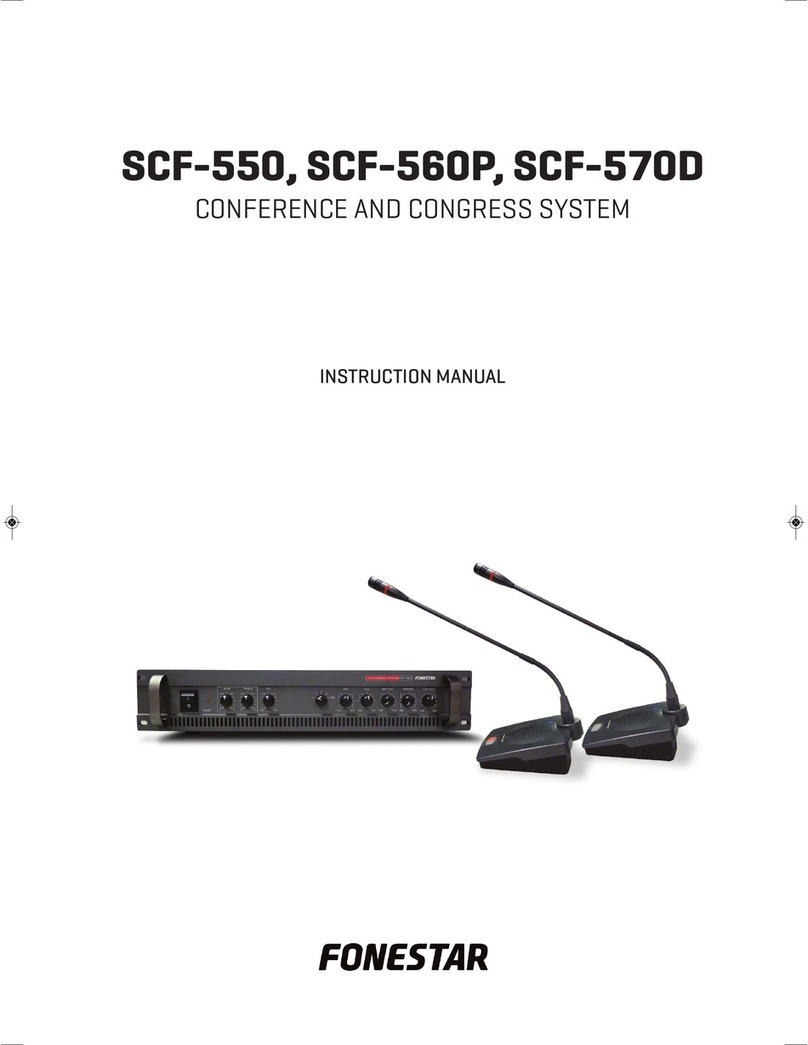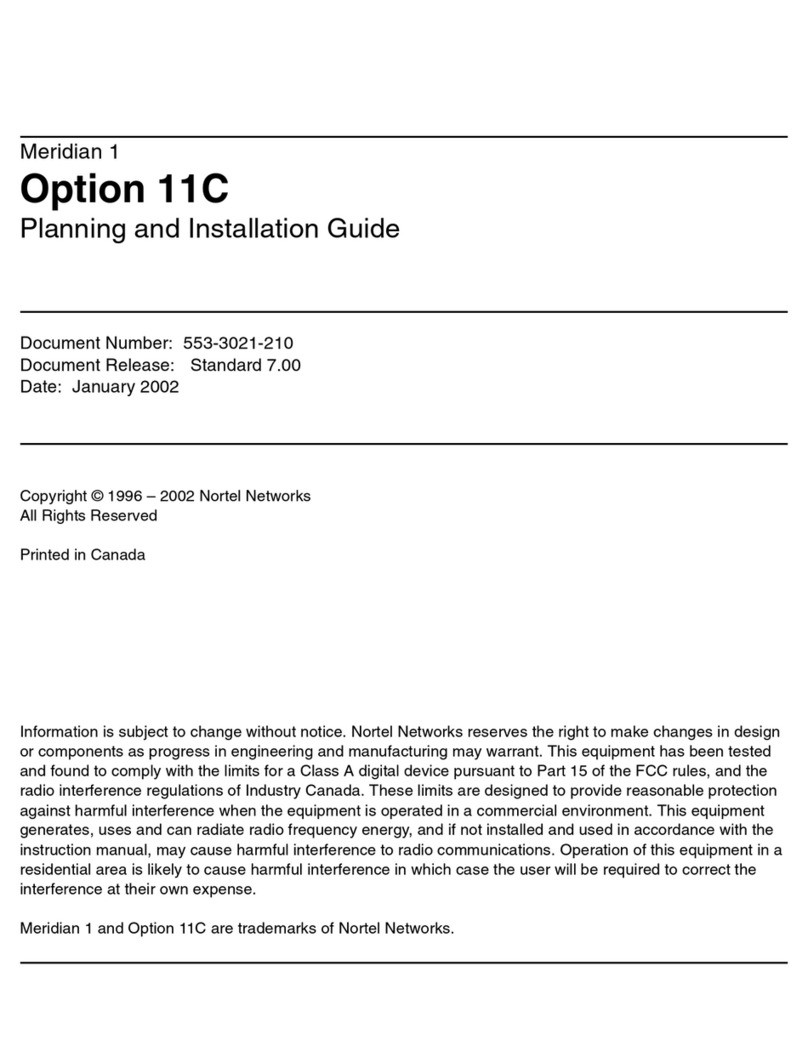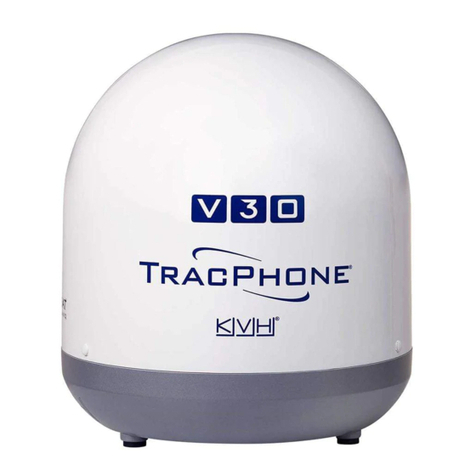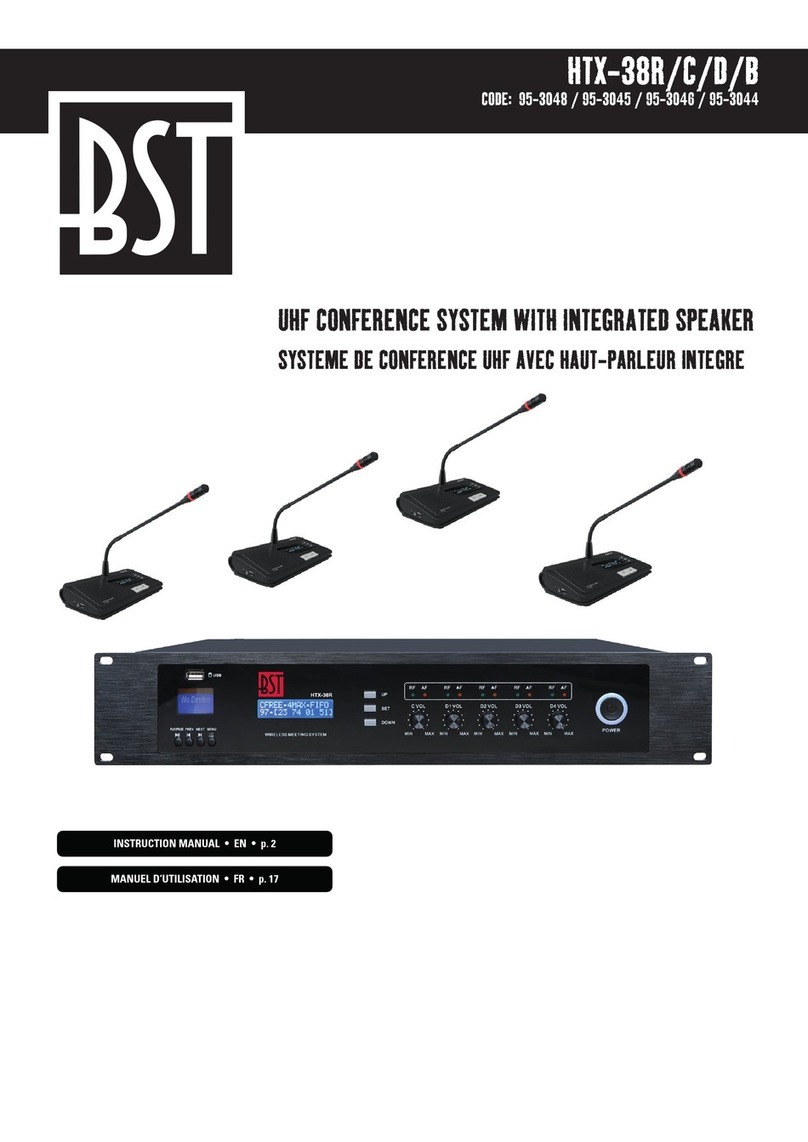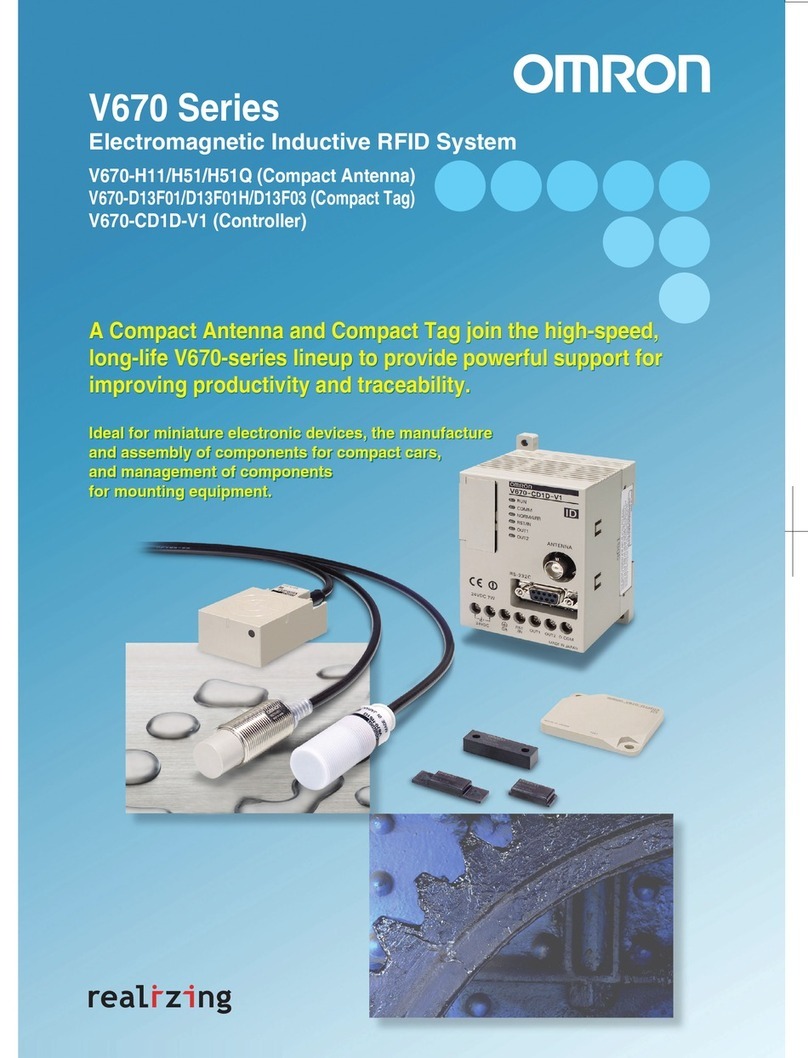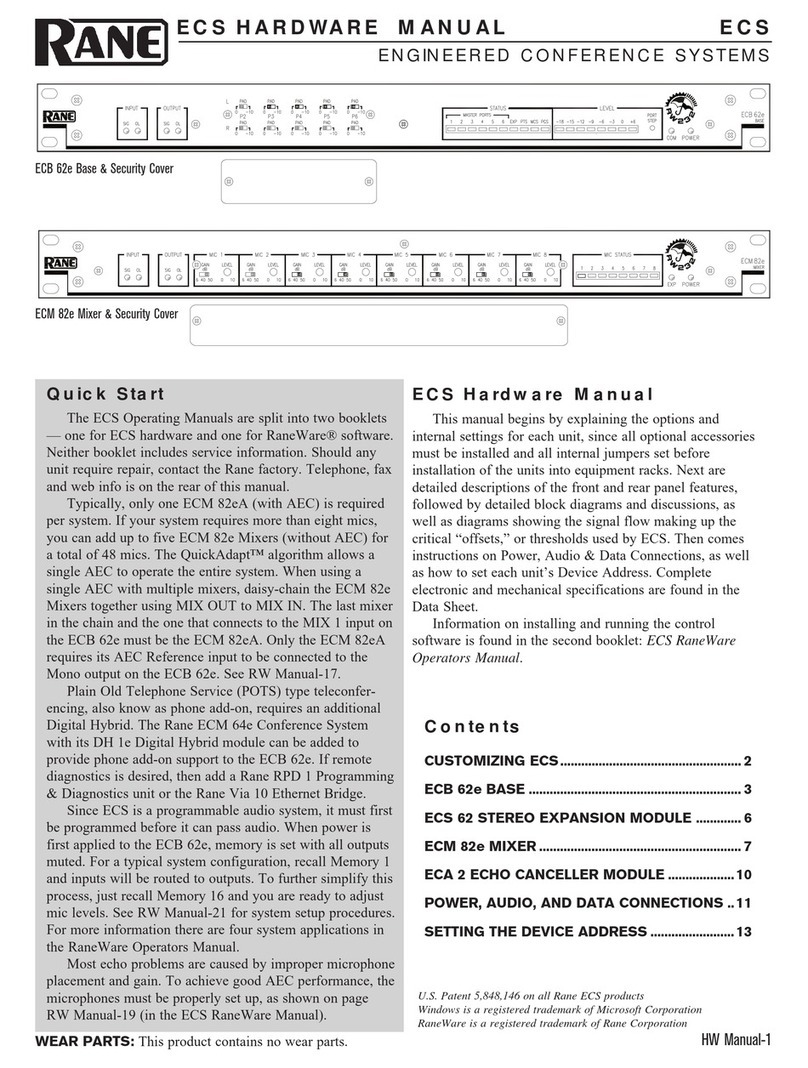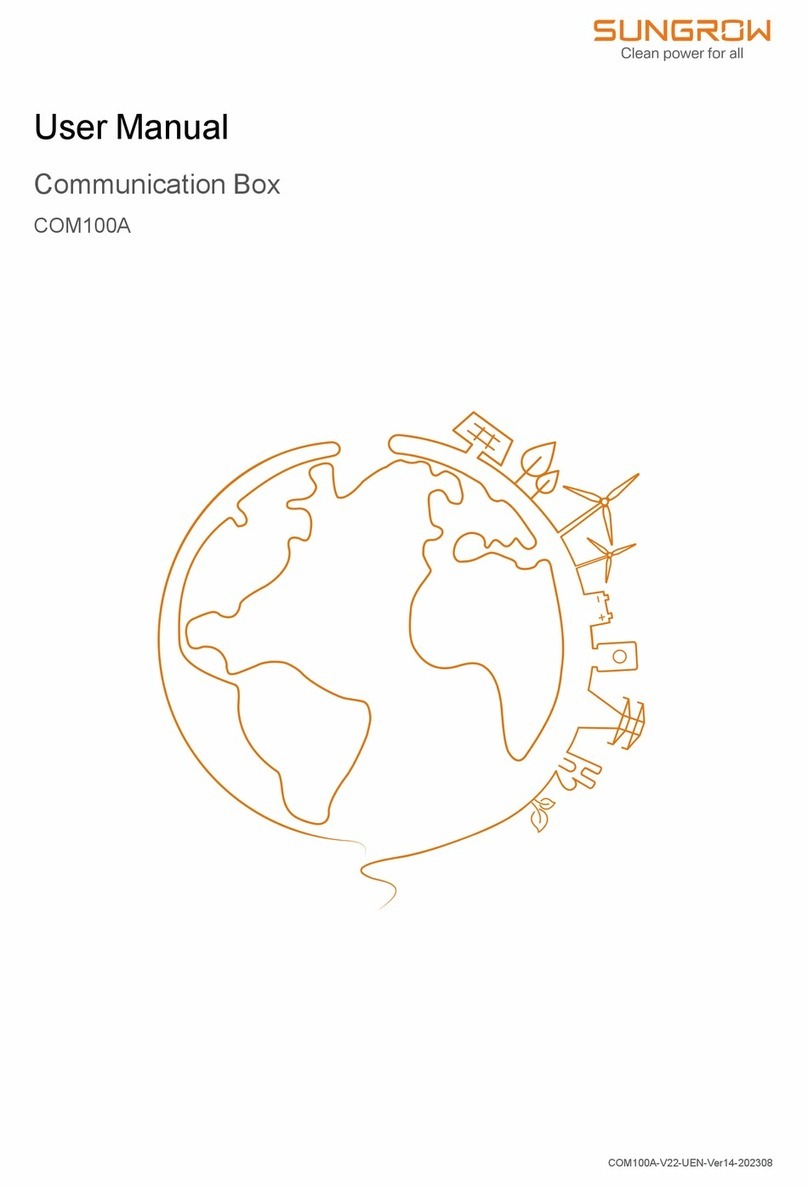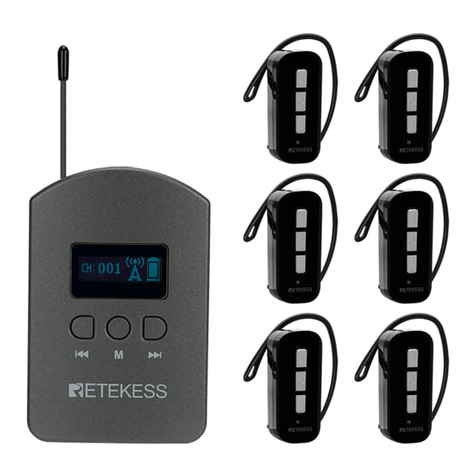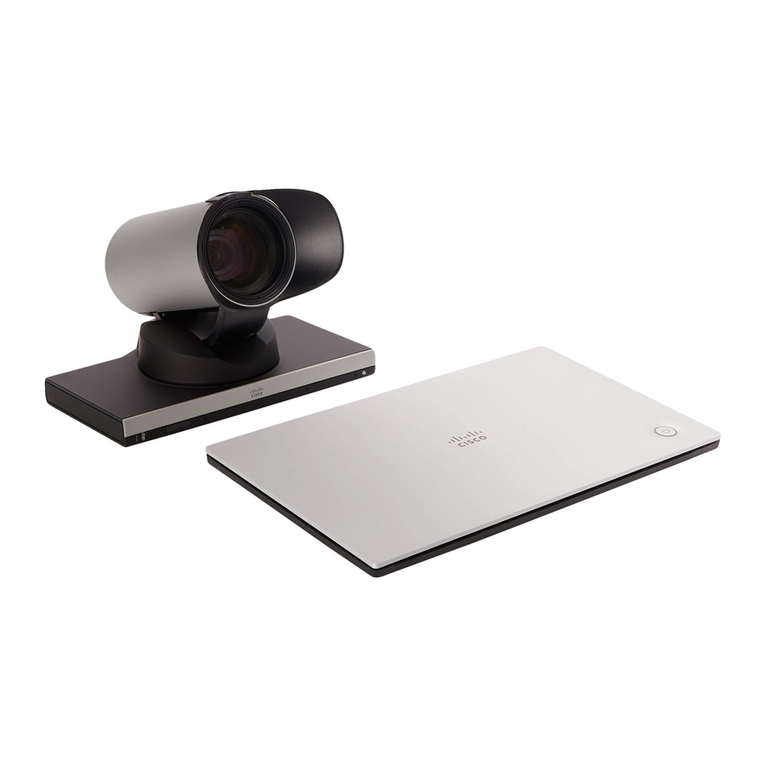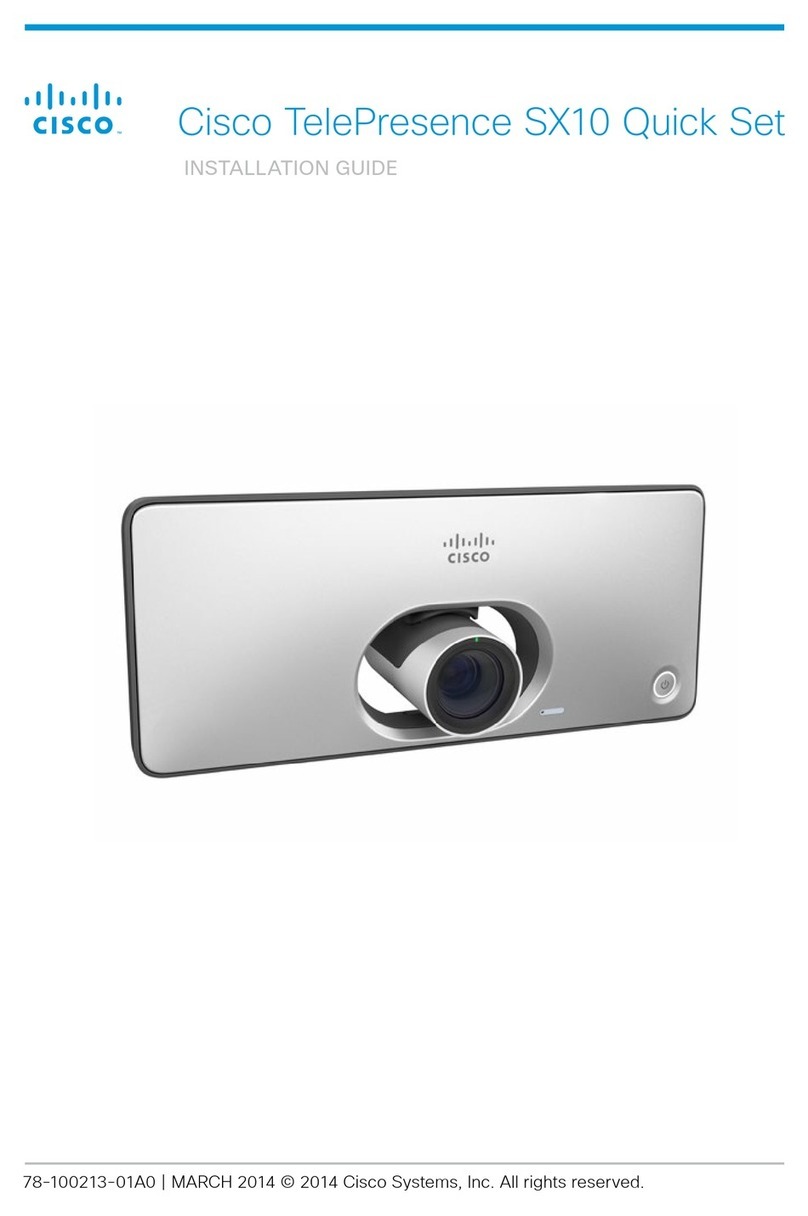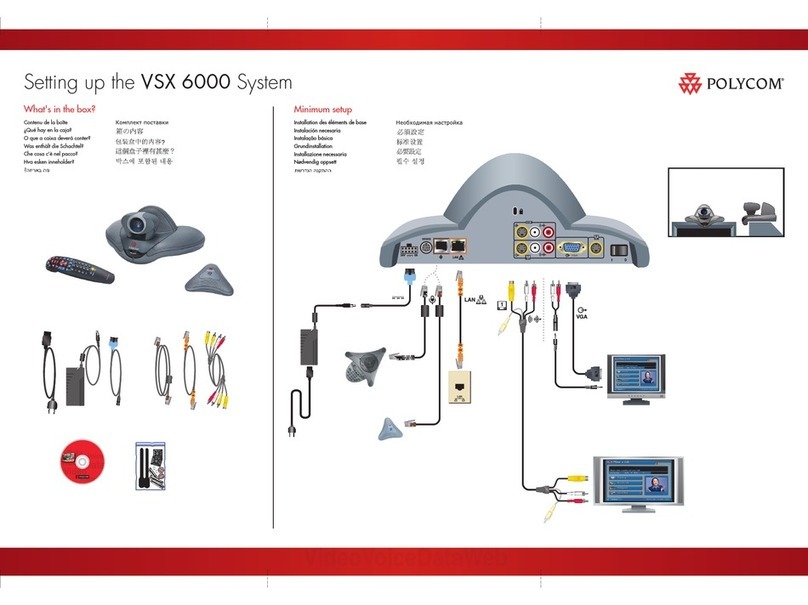BELGACOM Forum Phone 525 Guide

Belgacom
Forum™ 525/526
Mounting and Commissioning
Manual

Welcome to Belgacom
Thank you for buying this Belgacom product. Our products meet
the highest quality demands and are outstandingly designed.
The following instructions will guide you in the operation of your
Forum™ 525/526 and answer all important questions. Should you
require further assistance or information, please contact the
person responsible for your system or your retailer first.
Internet:
www.belgacom.be/pabx
You can contact our Support on the following telephone numbers:
in Dutch: 0800 22 400
in French: 0800 33 400
in German: 0800 44 400
in English: 0800 55 400
Forum™ 5000 and Forum™ 500
This user guide applies to the Forum™ 5000 and Forum™ 500
product families. The Forum™ 500 product family comprises the
Forum™ 523/524, Forum™ 525/526 and Forum™ 550/560 com-
munications systems. The Forum™ 5050 communications system
belongs to the Forum™ 5000 product family.
If individual features differ on the systems, a reference is made in
this user guide.
Wehope you enjoy using Forum™ 525/526.

1
Contents
About this Manual 9
Features 10
Factory Settings on Delivery 16
Telephony Basic Settings 16
Authorisations 17
Internet Functions 24
Update Notes 25
Upgrade Licence 25
Technical Notes 26
Updating 27
Installation 28
Scope of Delivery 28
Safety Precautions 28
Mounting Location 29
Wall Mounting 30
Installing Interface Cards 31
zV.24 and Doorstation Equipment Slots . . . . . . . . . . . . . . . 31
zSlots for Additional Interface Cards. . . . . . . . . . . . . . . . . . 32
Available Ports 34
zPositions of the Ports . . . . . . . . . . . . . . . . . . . . . . . . . . . 35
Interface Cards 36
zForum 525/526 (5 Slots). . . . . . . . . . . . . . . . . . . . . . . . . 36

2
Port Assignment, Termination, Cable Lengths 39
zS0Ports . . . . . . . . . . . . . . . . . . . . . . . . . . . . . . . . . . . . 39
zUpn Ports . . . . . . . . . . . . . . . . . . . . . . . . . . . . . . . . . . . . 41
za/b Ports . . . . . . . . . . . . . . . . . . . . . . . . . . . . . . . . . . . . 41
zActor / Sensor . . . . . . . . . . . . . . . . . . . . . . . . . . . . . . . . 41
zLAN Port . . . . . . . . . . . . . . . . . . . . . . . . . . . . . . . . . . . . 42
zDSL Port . . . . . . . . . . . . . . . . . . . . . . . . . . . . . . . . . . . . 43
Power Failure 43
Connectible Terminals 44
zInternal/External S0Ports . . . . . . . . . . . . . . . . . . . . . . . . 44
zUpn Ports . . . . . . . . . . . . . . . . . . . . . . . . . . . . . . . . . . . . 44
za/b Ports . . . . . . . . . . . . . . . . . . . . . . . . . . . . . . . . . . . . 45
zCOM Port. . . . . . . . . . . . . . . . . . . . . . . . . . . . . . . . . . . . 47
zLAN Port . . . . . . . . . . . . . . . . . . . . . . . . . . . . . . . . . . . . 47
Forum Phone 515 / 525 / 535:
Extensions and Accessories 48
Power Supply Unit 48
Key Extensions 49
Headset 52
PRA Connector Module 53
Installation 54
Configuration 56
Mounting the Forum 526 Rack
InfoCom System 57
Safety Precautions 57
Technical Data 58
Pinning of RJ 45 Jacks 59
Scope of Delivery 60

3
Configuration 61
Brief Guide to Initial Configuration 62
Configuring the Forum 525/526 64
zPreparing the Configuration . . . . . . . . . . . . . . . . . . . . . . . 64
zStarting the Web Console . . . . . . . . . . . . . . . . . . . . . . . . 64
zLoading the Online Help . . . . . . . . . . . . . . . . . . . . . . . . . 67
zFinishing the Configuration . . . . . . . . . . . . . . . . . . . . . . . 67
zSaving and Loading the Configuration . . . . . . . . . . . . . . . . 67
zPreconfiguration. . . . . . . . . . . . . . . . . . . . . . . . . . . . . . . 68
zRemote Configuration . . . . . . . . . . . . . . . . . . . . . . . . . . . 68
zCodes for IP Configuration. . . . . . . . . . . . . . . . . . . . . . . . 70
zReceiving System Messages as E-Mail . . . . . . . . . . . . . . . . 71
zLoading SW Updates. . . . . . . . . . . . . . . . . . . . . . . . . . . . 72
zResetting the System Data . . . . . . . . . . . . . . . . . . . . . . . 72
zBasic Hardware Settings Switch . . . . . . . . . . . . . . . . . . . . 73
zGenerating Your Own MoH Files . . . . . . . . . . . . . . . . . . . . 74
Configuration Examples 75
Forum 525/526 in Computer Networks 75
Introduction to TCP/IP 76
Forum 525/526 in a Serverless LAN 78
zDNS Name Resolution . . . . . . . . . . . . . . . . . . . . . . . . . . . 79
zInternet Access . . . . . . . . . . . . . . . . . . . . . . . . . . . . . . . 79
zRAS Access . . . . . . . . . . . . . . . . . . . . . . . . . . . . . . . . . . 80
Forum 525/526 in a LAN with an IP-enabled Server 81
zDNS Name Resolution . . . . . . . . . . . . . . . . . . . . . . . . . . . 82
zInternet Access . . . . . . . . . . . . . . . . . . . . . . . . . . . . . . . 83
zRAS Access . . . . . . . . . . . . . . . . . . . . . . . . . . . . . . . . . . 84
Branch Link 85
Useful Information on Internet Access 86
zCosts . . . . . . . . . . . . . . . . . . . . . . . . . . . . . . . . . . . . . . 86
zUsing the Web . . . . . . . . . . . . . . . . . . . . . . . . . . . . . . . . 86
zE-Mail . . . . . . . . . . . . . . . . . . . . . . . . . . . . . . . . . . . . . . 87
zNAT . . . . . . . . . . . . . . . . . . . . . . . . . . . . . . . . . . . . . . . 87

4
Voice over IP (VoIP) 89
Quick Start 91
zIP System Telephony . . . . . . . . . . . . . . . . . . . . . . . . . . . 91
zExternal SIP Line . . . . . . . . . . . . . . . . . . . . . . . . . . . . . . 92
zInternal SIP Telephony . . . . . . . . . . . . . . . . . . . . . . . . . . 93
Fundamentals 95
zPropagation Delay and Bandwidth . . . . . . . . . . . . . . . . . . 95
zLatency and Packet Length . . . . . . . . . . . . . . . . . . . . . . . 95
zVoice Quality . . . . . . . . . . . . . . . . . . . . . . . . . . . . . . . . . 97
zOptimisation . . . . . . . . . . . . . . . . . . . . . . . . . . . . . . . . . 98
zCall Set-up . . . . . . . . . . . . . . . . . . . . . . . . . . . . . . . . . . 99
zUseful Services . . . . . . . . . . . . . . . . . . . . . . . . . . . . . . . 99
zVoIP Profiles for SIP . . . . . . . . . . . . . . . . . . . . . . . . . . . 100
zVoice Activity Detection (VAD) . . . . . . . . . . . . . . . . . . . . 102
Media Gateway (MGW) 103
zSoftware MGW . . . . . . . . . . . . . . . . . . . . . . . . . . . . . . . 103
zMGW Interface Card . . . . . . . . . . . . . . . . . . . . . . . . . . . 104
SIP Telephony 105
zExternal SIP Connections . . . . . . . . . . . . . . . . . . . . . . . 106
zInternal SIP Subscribers . . . . . . . . . . . . . . . . . . . . . . . . 108
zForum IPhone 512 / Forum IPhone 545 SIP Telephones . . 112
VoIP System Telephones 117
zDevice Properties . . . . . . . . . . . . . . . . . . . . . . . . . . . . . 117
zVoIP System Telephone Configuration . . . . . . . . . . . . . . . 118
zLAN DHCP Server . . . . . . . . . . . . . . . . . . . . . . . . . . . . . 119
zStart Procedure . . . . . . . . . . . . . . . . . . . . . . . . . . . . . . 120
zLocal Configuration. . . . . . . . . . . . . . . . . . . . . . . . . . . . 123
Forum IPhone PC 126
zInstallation . . . . . . . . . . . . . . . . . . . . . . . . . . . . . . . . . 127
zConfiguration. . . . . . . . . . . . . . . . . . . . . . . . . . . . . . . . 127
DECT over IP®129
Properties 129
zDECT Base Stations . . . . . . . . . . . . . . . . . . . . . . . . . . . 129
zFeatures . . . . . . . . . . . . . . . . . . . . . . . . . . . . . . . . . . . 131
Configuration 132
zDual Operation. . . . . . . . . . . . . . . . . . . . . . . . . . . . . . . 134
zSynchronisation . . . . . . . . . . . . . . . . . . . . . . . . . . . . . . 134

5
zSetting up the WLAN Function . . . . . . . . . . . . . . . . . . . . 135
zConfiguring for a Remote Location . . . . . . . . . . . . . . . . . 139
PBX Cascading 141
Variants of PBX Cascading 141
Functionality of PBX Cascading 141
Putting a Cascaded PBX into Operation 142
zNotes . . . . . . . . . . . . . . . . . . . . . . . . . . . . . . . . . . . . . 143
PBX Networking 144
Connections 145
Point-to-Point Connection Technology 146
zProtocol: Q.SIG or DSS1 . . . . . . . . . . . . . . . . . . . . . . . . 146
zMaster/Slave . . . . . . . . . . . . . . . . . . . . . . . . . . . . . . . . 146
zL1 Clock . . . . . . . . . . . . . . . . . . . . . . . . . . . . . . . . . . . 147
Point-to-Point Connection Lines 148
zDirect Connection. . . . . . . . . . . . . . . . . . . . . . . . . . . . . 148
zConnection via an Active Transmission System. . . . . . . . . 149
zConnection via the Public Network . . . . . . . . . . . . . . . . . 149
IP Network Connections 150
zConnection via Q.SIG.IP . . . . . . . . . . . . . . . . . . . . . . . . 150
zConnection via SIP tie line . . . . . . . . . . . . . . . . . . . . . . . 151
Configuration 153
zBundles . . . . . . . . . . . . . . . . . . . . . . . . . . . . . . . . . . . 153
zRoutes . . . . . . . . . . . . . . . . . . . . . . . . . . . . . . . . . . . . 153
zNumbering . . . . . . . . . . . . . . . . . . . . . . . . . . . . . . . . . 154
Technical Details 155
Telephony 157
E.164 conversion 157
zConfiguration. . . . . . . . . . . . . . . . . . . . . . . . . . . . . . . . 158
zExample . . . . . . . . . . . . . . . . . . . . . . . . . . . . . . . . . . . 159
zFurther Information . . . . . . . . . . . . . . . . . . . . . . . . . . . 160

6
Call Forwarding 161
zAttributes . . . . . . . . . . . . . . . . . . . . . . . . . . . . . . . . . . 162
zLoop Detection. . . . . . . . . . . . . . . . . . . . . . . . . . . . . . . 163
zVirtual Call Numbers . . . . . . . . . . . . . . . . . . . . . . . . . . . 163
zHunt Groups . . . . . . . . . . . . . . . . . . . . . . . . . . . . . . . . 164
zExternal Call Forwarding . . . . . . . . . . . . . . . . . . . . . . . . 165
zInformation on the Update . . . . . . . . . . . . . . . . . . . . . . 165
Busy Keys 166
PIN Code Telephony 168
zConfiguration. . . . . . . . . . . . . . . . . . . . . . . . . . . . . . . . 168
zImplementation . . . . . . . . . . . . . . . . . . . . . . . . . . . . . . 169
Switch authorisation 170
zConfiguration. . . . . . . . . . . . . . . . . . . . . . . . . . . . . . . . 170
zImplementation . . . . . . . . . . . . . . . . . . . . . . . . . . . . . . 171
Team Functions 172
Introduction 172
zExplanation of Keys . . . . . . . . . . . . . . . . . . . . . . . . . . . 172
zTeam Configuration . . . . . . . . . . . . . . . . . . . . . . . . . . . 174
Examples of Use 175
zExecutive/Secretary Team . . . . . . . . . . . . . . . . . . . . . . . 175
zThree-member Team . . . . . . . . . . . . . . . . . . . . . . . . . . 177
zUnified Team . . . . . . . . . . . . . . . . . . . . . . . . . . . . . . . . 178
zToggle Team . . . . . . . . . . . . . . . . . . . . . . . . . . . . . . . . 180
Call Queue 182
Introduction 182
zActivation of Queues. . . . . . . . . . . . . . . . . . . . . . . . . . . 183
zCall Forwarding . . . . . . . . . . . . . . . . . . . . . . . . . . . . . . 184
zPickup. . . . . . . . . . . . . . . . . . . . . . . . . . . . . . . . . . . . . 184
zHunt Groups . . . . . . . . . . . . . . . . . . . . . . . . . . . . . . . . 184
Examples of Use 185
zEnquiry Station for an Operator with Two System
Telephones . . . . . . . . . . . . . . . . . . . . . . . . . . . . . . . . . 185
zGroup of Three Enquiry Stations. . . . . . . . . . . . . . . . . . . 186

7
Multi-Company Variant 188
Configuring the Multi-Company Variant 189
zActivating the Multi-Company Variant . . . . . . . . . . . . . . . 190
zConfiguring and Managing Companies. . . . . . . . . . . . . . . 190
zAssigning Users . . . . . . . . . . . . . . . . . . . . . . . . . . . . . . 191
zAssigning a Bundle/SIP Trunk . . . . . . . . . . . . . . . . . . . . 191
zAllocating Routing Codes . . . . . . . . . . . . . . . . . . . . . . . . 192
zConfiguring the Company Exchange . . . . . . . . . . . . . . . . 192
Working with the Multi-Company Variant 193
zCompany Telephone Book . . . . . . . . . . . . . . . . . . . . . . . 193
zMaking Calls Between Companies. . . . . . . . . . . . . . . . . . 194
zBilling Charges per Company . . . . . . . . . . . . . . . . . . . . . 194
Configuring the PC Software 195
Using the Systray Display 196
Browser for Forum CTI and Forum Hotel 197
Synchronising the PC Clock 198
Application Interfaces 199
CSTA interface 199
Setting up TAPI Interface 201
LDAP Interface 203
zAddress Queries using LDAP . . . . . . . . . . . . . . . . . . . . . 203
zQuerying External LDAP Server . . . . . . . . . . . . . . . . . . . 204
SNMP Interface 208
zInstalling SNMP Agent. . . . . . . . . . . . . . . . . . . . . . . . . . 209
zConfiguring SNMP . . . . . . . . . . . . . . . . . . . . . . . . . . . . 210
Frequently Asked Questions 211
General/Hardware 212
Telephony 213
PBX Networking 215

8
DECT 216
LAN 217
Internet 219
Technical Specifications 220
Environmental Information 222
Index 223
Technical support for your
Forum® telephone exchange 227

9
About this Manual
About this Manual
This user guide is designed for the technician who will install the
Forum 525/526 and put it into operation. Usually this is the
responsibility of your Belgacom agent, who will prepare the
Forum 525/526 and hand over the configured, operational sys-
tem.
The information given
zabout mounting the Forum 525/526
zabout connecting and commissioning the terminals
zabout installation and configuration of software and single
components
are for these people only.
Please note: The Forum 525/526 may only be installed and
serviced by qualified Belgacom personnel.
Users of the Forum 525/526 will find instructions and background
information in this manual concerning administrative tasks which
occur in the course of daily, routine operation (e.g. team configu-
ration). In addition, there is a list of frequently asked questions to
help these users identify and eliminate malfunctions.

10
Features
Features
The Forum 525/526 is a communications system for integrated
voice and data communication. The outstanding feature of this
communications system is its modular structure:
zForum 525/526 is a system that can be tailored exactly to your
communications requirements. Initially, the main module
doesn’t carry any telephony interfaces. They can be added by
means of additional interface cards. The main module provides
five slots for different combinations of interface cards.
zAdditionally the Forum 525/526 offers two special slots:
– One slot to incorporate a V.24 interface card. This card
provides a serial port.
– One slot to incorporate doorstation equipment interface
card.
Telephony
The Forum 525/526 communications system is designed to be
connected to an ISDN basic access using the DSS1 protocol. Sys-
tem access (point-to-point) and multi-terminal access (point-to-
multipoint) are both supported. The two forms of access can be
configured in parallel.
For this purpose the Forum 525/526 with interface cards provides
up to 12 S0ports (switchable between internal/external). An over-
view of all possible interface card combinations can be found
under Forum 525/526 (5 Slots) starting on page 36.
The Forum 525/526 complies with the regulations for telecommu-
nications equipment. The DSS1 protocol is implemented.
The firmware of the Forum 525/526 is designed for configuring up
to 300 users.
You can connect the following devices to the Forum 525/526:
zanalogue terminals
zEuro-ISDN terminals
zBelgacom system telephones Forum Phone 515,
Forum Phone 525, Forum Phone 535

11
Features
zBelgacom system telephones Forum Phone 520,
Forum Phone 530
zBelgacom Forum Base 500 base stations
zDECT handsets Forum Free (via Forum 500 base station)
zISDN telephones (on the Upn port) Forum Phone 510
An S0port can be used by Euro-ISDN terminals working in accord-
ance with DSS1. A Upn port is suitable for the Forum Phone range
of system telephones. Forum 500 base stations can also be con-
nected to the DECT-enabled Upn ports on interface cards. An ana-
logue port is used by standard analogue devices.
If the CNIP (calling name identification presentation) feature is
supported by your network provider, the latter will show you the
name of callers in addition to their number for each incoming
trunk call. The Forum 525/526 supports the display of the name
on system telephones. However, if you have created an entry in
the telephone book of the Forum 525/526 under the number of
the caller, this will be displayed instead.
The Forum 525/526 can be integrated into an existing network
(LAN) and be used by all workstations as an Internet access
router and mail client.
Configuration and programming of the Forum 525/526 is per-
formed by means of a special Web browser (known as the “Web
console”), which can be run on a connected PC.
The Forum 525/526 can also be prepared in the service centre.
A PC can be connected via a retrofitted V.24 interface card
(Forum 525 Card serial interface) to the COM port for the purpose
of configuring the system or transferring connection data.
To connect the Forum 525/526 to existing company hardware,
“actor” ports (output) and “sensor” ports (input) can be provided
by retrofitting a doorstation interface card. For example, this can
be used to operate a door opener and a doorbell via the system
(this requires additional equipment).
Forum 525/526 enables you to use CTI (Computer Telephony
Integration) applications. The TAPI (Telephony Application Pro-
gramming Interface) and CSTA (Services for Computer Supported

12
Features
Telecommunications Applications) standards are supported for the
purpose of integrating CTI applications.
Forum 525/526 also features an integrated browser-based CTI
application, the Forum CTI. The Forum CTI allow users to call up
and use telephone functions from their PCs.
Furthermore, the Forum CTI Touch web application is a
web-based solution available for controlling telephony
functions with current smartphones.
Further Telephony Features
The installed memory card enables you to operate a digital voice
memory and voice information system. A 1 GB memory card
offers about 60 minutes of recording time. For more information,
please refer to the user guides “Forum Voicemail” and
“Forum Auto Attendant”.
You can optimise your telephone communication by using the
team functions and the call-queuing function.
With an additional licence, the web application Forum Count can
be used. This web application enables you to register and store
telephony connections and evaluate the connections with user
defined filters. Further information can be found in the online help
of the web console.
You can integrate external telephony applications via the
extended CSTA interface. The extended CSTA interface is licensa-
ble separately (see CSTA interface starting on page 199).
Networking
As your company’s requirements grow, the Forum 525/526 can be
networked with other telecom systems (see PBX Networking start-
ing on page 144). The Forum 525/526 can then operate as a sub-
system or DECT server. To operate the system as a DECT server
the system’s Upn ports must be DECT-capable. It is also possible
to create a telecom system with several networked telecom instal-
lations.
Voice over IP (VoIP)
Forum 525/526 supports the connection of VoIP terminals, ena-
bling the company’s existing internal network infrastructure (LAN

13
Features
with 100 MBit/s) to be used for telephony as well. Corded system
terminals of the Forum IPhone 525 and Forum IPhone 535 as well
as the VoIP system telephones Forum IPhone 520 and
Forum IPhone 530 types are available for this purpose. These
devices have the same functionality and support the same fea-
tures as the non IP-enabled system terminals.
For users wanting to use PC-supported telephony, IP system ter-
minals are available as separate licensable software versions
(“Softphone”). You will find further information on this in the
chapter on Voice over IP (VoIP) starting on page 89.
VoIP with media gateway card
Additional VoIP features can be used by installing a media gate-
way card with the communications system Forum 525/526.
zSIP (internal): You can operate SIP system phones
Forum IPhone 512 / Forum IPhone 545 and standard SIP
telephones.
zSIP (external): You can use external SIP connections as “SIP
trunk lines”. Setting up and using external SIP connections is
completely transparent for telephone users, providing them
with easy access to low-cost Internet telephony and a fallback
to normal ISDN connections in case of error or busy lines. A
Media Gateway card is required for SIP telephony.
zQ.SIG-IP and SIP tie line: Several communications systems
can be networked via IP connections using “Q.SIG IP”. Low-
cost data connections can be used to network the
communications systems of branch offices instead of ordinary
permanent ISDN lines.
zDECT over IP®: DECT networking via VoIP is another possible
option for offices already extensively using VoIP telephony.
The Radio Fixed Parts (RFPs) are connected via network data
connections, so they do not occupy any Upn ports and can use
existing network connections. With DECT over IP, VoIP
protocol data is changed into DECT-compatible voice data
direct on the RFPs. DECT-RFPs and DECT over IP-RFP can be
used together in combination in many cases; it is however not
possible to switch between RFPs using different technologies
during a call.

14
Features
Packet Data in the D Channel
Some business applications, for instance POS terminals, cash reg-
isters or credit card terminals, require a permanent data connec-
tion over the X.25 packet data network. Packet data transfer
through the ISDN D channel (according to X.31 via SAPI 16) can
also be established between several S0interfaces of the
Forum 525/526. Simultaneous connections are distinguished by
means of a TEI (Terminal Endpoint Identifier).
X.31 packet data can be forwarded between two S0interfaces (for
instance an internal and external S0interface). Equally, data can
be forwarded (“routed”) over permanent Q.SIG lines. Data can
also be routed over an S2M interface. It is possible to operate mul-
tiple terminals with the same TEI on different internal S0inter-
faces. A TEI mapping table allows these X.31 connections to be
routed to the same external S0interface.
The routing table for X.31 packet data is set in the Configurator
under Telephony: Extended: X.31. Additional information can
be found in the Configurator online help files.
Internet Access
It is possible to connect individual PCs to the Forum 525/526 via
the internal S0ports, or to connect an entire LAN to the
Forum 525/526 via the Ethernet port. These PCs can access the
Internet via the Forum 525/526. If Internet access is already
available from an Internet service provider, this can be configured
in the Forum 525/526. If the client network is not IP-capable, the
Forum 525/526 can administer the IP configuration necessary for
Internet access. The Forum 525/526 has an integrated DHCP
server and a DNS server, which in this case take over IP address
administration and name resolution for the client PCs.
The Forum 525/526 enables Internet access for all connected PCs
by means of a common IP address. Only this is externally visible.
The local IP addresses of the client PCs are translated to the IP
address of the Forum 525/526 by network address translation
(NAT). In this way the client PCs in the LAN cannot be reached
directly from the Internet. This protects them from direct external
attack. The LAN is additionally protected by the Forum 525/526
filter lists, which can be customised individually (firewall function).

15
Features
Note: We recommend you to read through the explanations
under Useful Information on Internet Access starting on page 86.
E-Mail
The Forum 525/526 has an integrated e-mail function that is able
to use the POP3, APOP or IMAP4 protocols to check the Internet
service provider for incoming mail. When configuring the
Forum 525/526, e-mail account query can be configured for every
member of staff. The Forum 525/526 then fetches the incoming e-
mail headers (subjects) and senders from the mail server at set
intervals, and forwards them to users’ system terminal.
E-mail accounts for the sending e-mail can also can be configured
for users. E-mails can then, for example, be sent directly from the
Forum CTI to other users. In addition, users who have had a voi-
cebox configured for themselves, can let themselves be notified of
new voicebox messages via e-mail.
Important events and errors are kept by the Forum 525/526 in an
internal log book: the error store. To inform or alert the system
administrators, entries in the log book (system messages) can be
sent via e-mail.
Further Network Features
You can offer staff the possibility of dialling into the LAN by means
of RAS access.
A LAN-to-LAN link can also be implemented by ISDN. In this way
two Forum 525/526s can connect their LANs by dial-in on
demand.
You can query the internal phone book of the Forum 525/526
communications system via LDAP. It is also possible to integrate
entries of an external directory via LDAP. Furthermore, integration
into a network administration solution via SNMP is possible. For
further information on the various application interfaces, please
refer to Application Interfaces starting on page 199.
Glossary
Refer to the explanations in the glossary (supplied as a PDF file on
the system CD).

Telephony Basic Settings16
Factory Settings on Delivery
Factory Settings on
Delivery
The following basic settings and features are active on delivery.
We recommend that you configure the Forum 525/526 communi-
cations system to suit your individual requirements before using it
(see Configuration starting on page 61).
Telephony Basic Settings
With the Forum 525/526 all ports (S0, Upn and a/b ports) are real-
ised by installing a specific combination of interface cards for this
purpose. An overview of available interface cards can be found in
the “Interface cards”chapter in the section Forum 525/526 (5
Slots) starting on page 36.
Note: The Forum 525/526 generally requires the slots to be con-
figured before any interface can be commissioned.
zThe Forum 525/526 is configured ready for use in Belgium.
zAll corded terminals ring if there are incoming external calls.
zThe password for the “Administrator” user is empty.
zThe system PIN, for remote programmable call diversion for
example, is set at “0000”.

Authorisations 17
Factory Settings on Delivery
Authorisations
The allocation of authorities regulates which functions terminals
on Forum 525/526 can use. These authorities are configured for
so-called user groups, to which users and their terminals are then
assigned.
Three user groups are preset: “Administrators”, “Standard” and
“Guests”. “Administrators” can access all functions in Forum 525/
526 and have unlimited configuration rights. Users in the “Guests”
group can not configure Forum 525/526, may not make any
external calls and can only use a limited range of Forum 525/526
terminal functions. The “Standard” user group is well suited as a
starting point for creating user groups for normal users of the sys-
tem (e. g. the staff members of a company) because of its default
settings.
Note: When the Forum 525/526 is commissioned, all connected
terminals are initially in the “Administrators” group until a user
logs on to the Web console. Subsequently, all terminals are auto-
matically in the “Guests” group. For more details on the configura-
tion of user groups, refer to the online help in the chapter entitled
“User Manager”.
The following functions are delivered preset for user groups:
User group settings
Function / Authorisation Standard Adminis-
trators
Guests
Applications
Configurator personal Expert View
Costs - + -
Phone Book + + +
Forum CTI + + -
Busy lamps + + -
Forum Count + + -
Forum Hotel + + -
ISP application - - -

Authorisations18
Factory Settings on Delivery
Courtesy Service off off off
Phone Book
Use LDAP + + +
Use central + + +
Edit central - + -
Use own company + + +
Edit own company - - -
Edit other companies - - -
Entries (personal) 20 20 0
Dial in (outgoing)
External Interna-
tional
Internatio
nal
Incoming
only
Immediate external line
seizure
---
External line seizure over
operator
---
LCR *) ++-
Deactivate LCR *) ++-
LCR at call forwarding to
extern. *)
---
VIP call *) ++-
PIN dial *) ---
Announcement *) ++-
Announcement accept *) +++
Intercom *) ++-
Dialout for other phone *) ---
Instant connection*) ++-
User group settings
Function / Authorisation Standard Adminis-
trators
Guests
This manual suits for next models
1
Table of contents
Popular Conference System manuals by other brands

GAI-Tronics
GAI-Tronics 10959-207 Operation, installation and service manual

Qufield Co., Ltd.
Qufield Co., Ltd. LM-D100US instruction manual
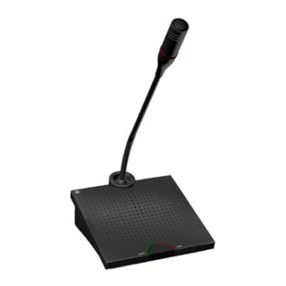
DIS
DIS CDS 4000 User manual & installation guide
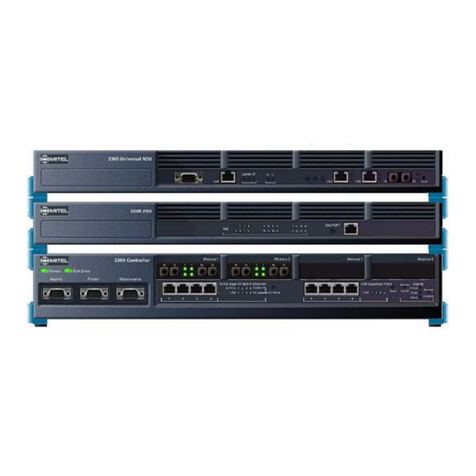
Mitel
Mitel 3300 Technician's handbook
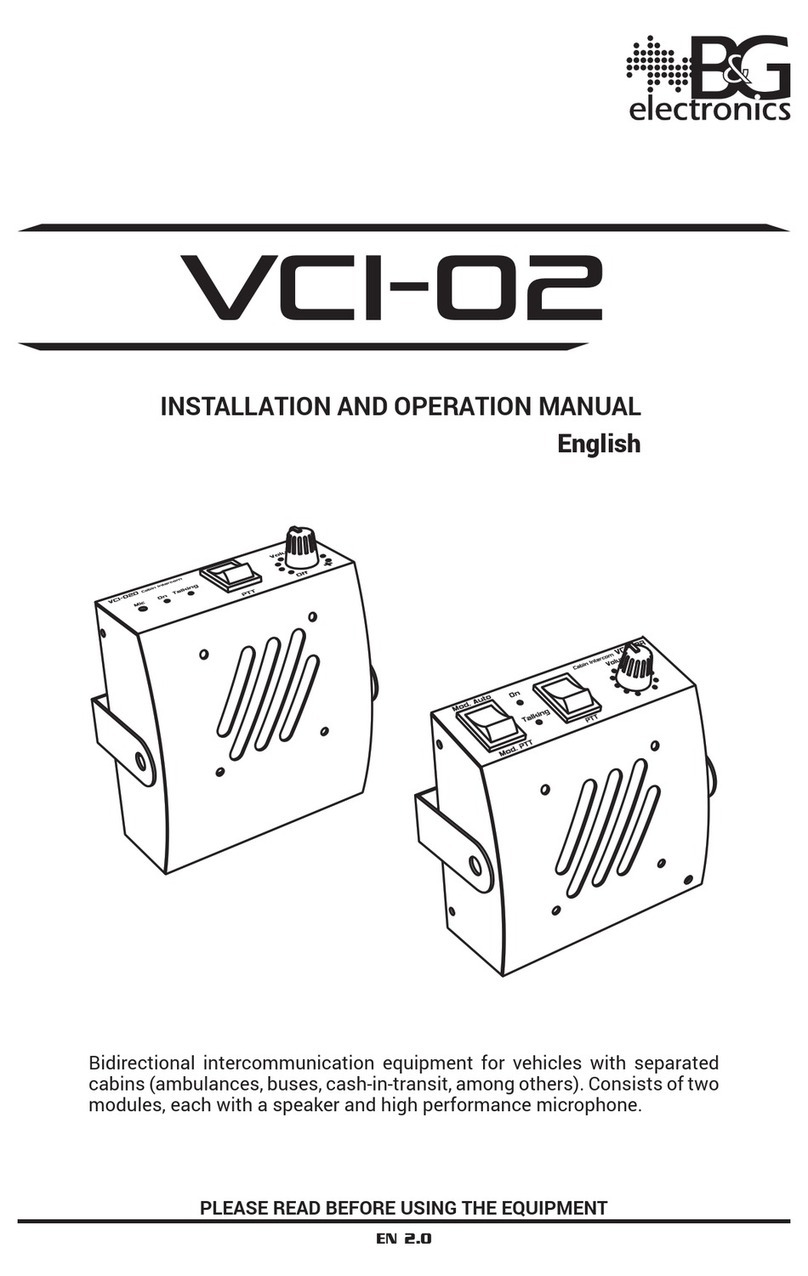
B&G electronics
B&G electronics VCI-O2 Installation and operation manual
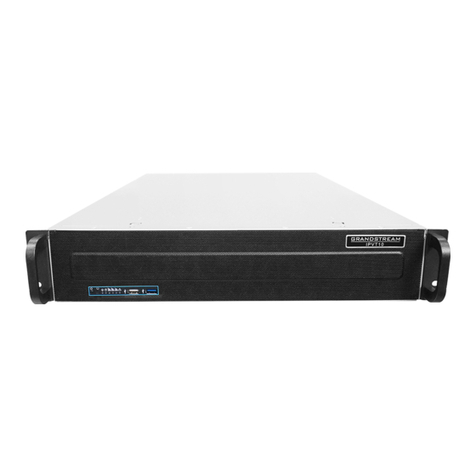
Grandstream Networks
Grandstream Networks IPVT10 Administration guide
